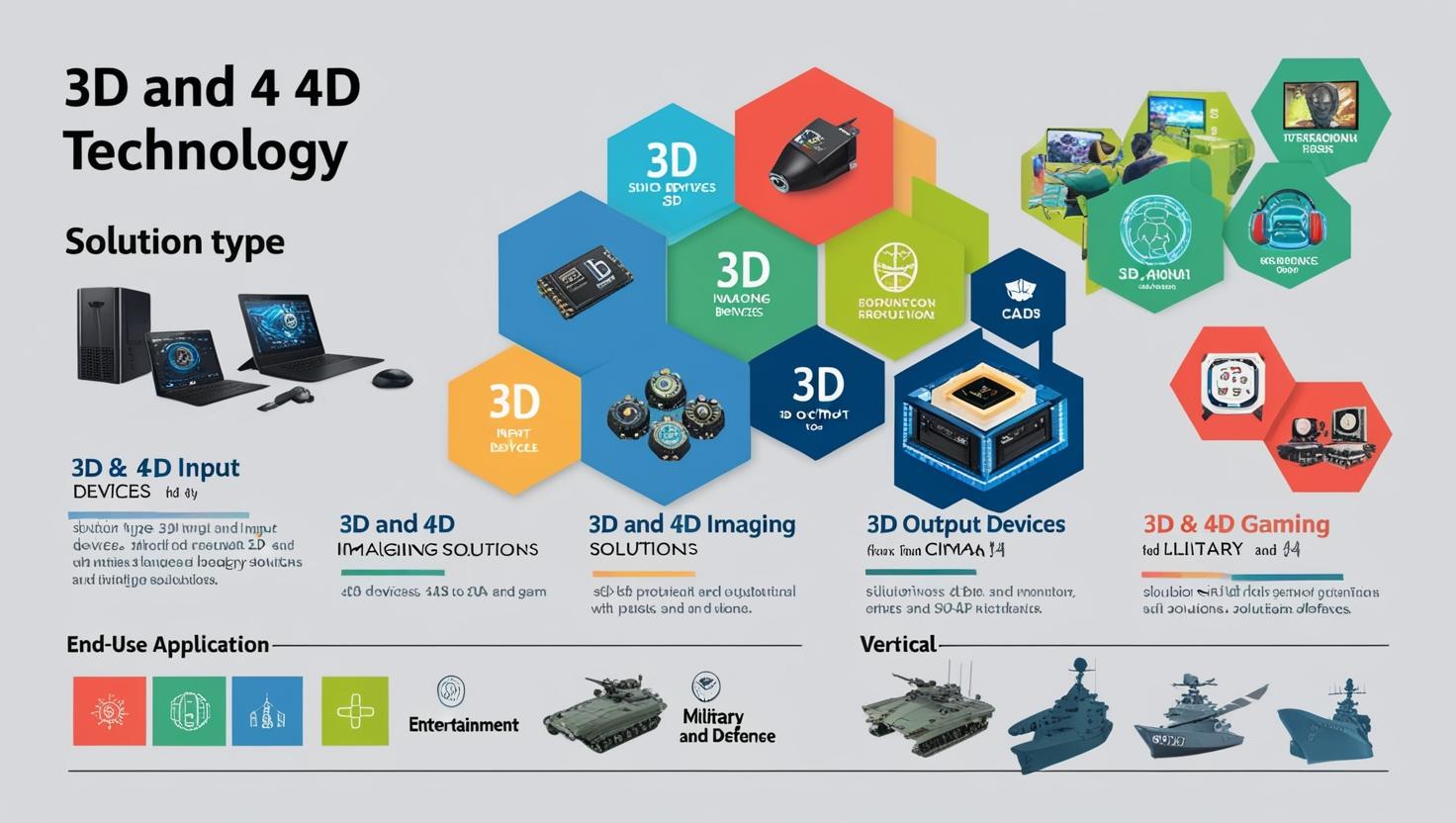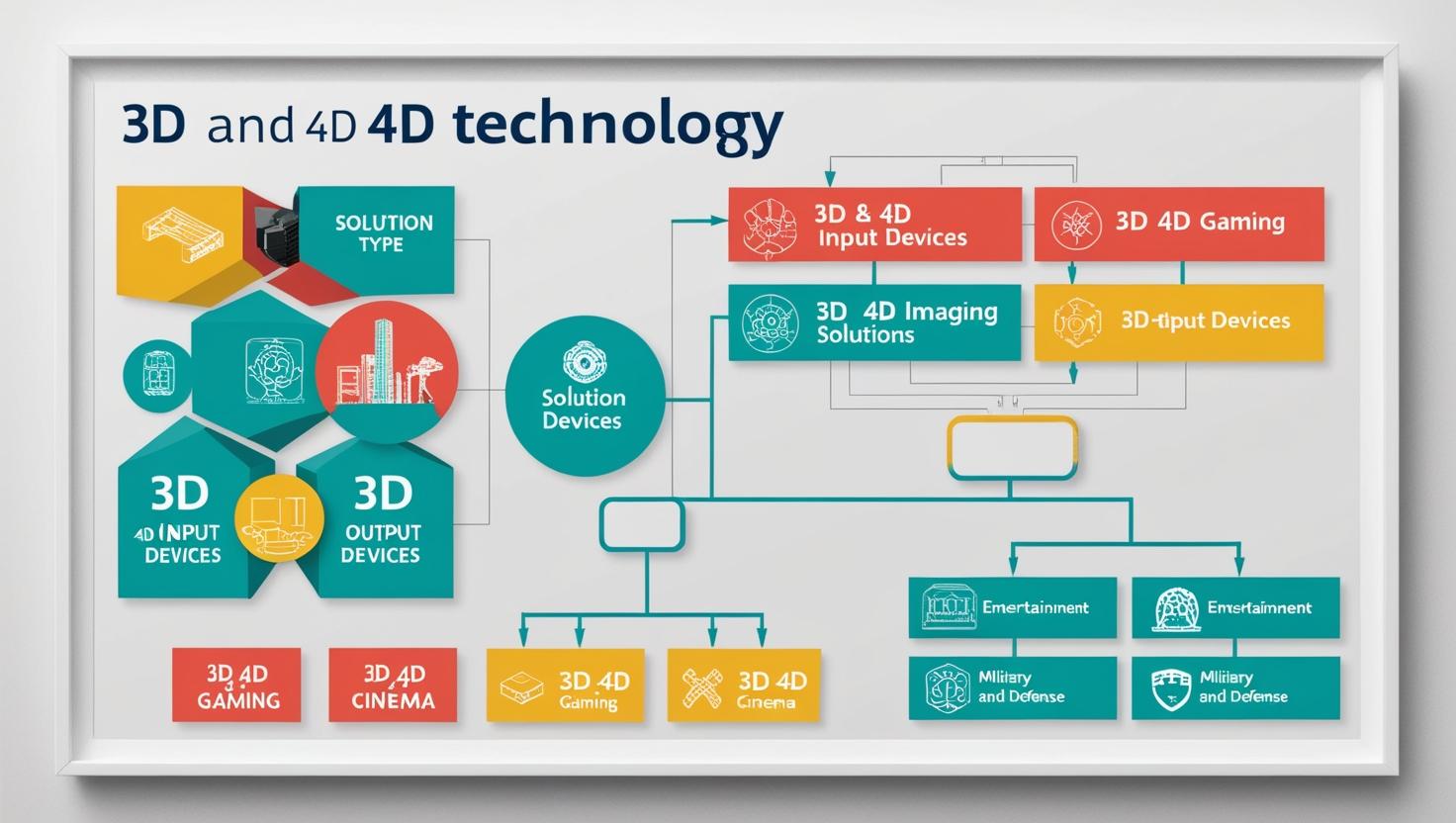The convergence of immersive technologies, smart manufacturing, digital media, and advanced healthcare solutions is fueling rapid growth in the 3D and 4D technology sector in North America. As the demand for realism, simulation, and precision expands across industries, this dynamic market has evolved into a prime target for investors and innovators.
From 3D printing and holography to 4D imaging and smart materials, North America is home to a thriving ecosystem of companies leading the charge in next-gen visual and spatial experiences. With the market projected to grow at a CAGR exceeding 16.7% through 2029, the region presents high-growth investment opportunities across multiple verticals.

Expanding Use Cases by Industry
Healthcare: Personalized and Predictive Medicine
3D Bioprinting: The next frontier, where living tissues are printed using patient-specific data, creating possibilities for organ and tissue regeneration.
Surgical Simulation and Training: 4D simulations using AR/VR allow medical students and professionals to practice complex surgeries in realistic virtual environments.
Custom Prosthetics and Implants: 3D printing enables cost-effective, tailor-made implants that fit patient anatomy with higher precision and fewer complications.
Opportunity: Investments in healthtech platforms combining 3D modeling with AI-driven diagnostics are gaining ground among VCs and hospital systems.
Media, Gaming, and Entertainment: Immersion 2.0
3D Animation and Virtual Production: Studios are moving toward volumetric capture and real-time rendering with 3D models.
4D Cinemas and Experiential Spaces: Beyond visuals, 4D introduces environmental effects—movement, vibration, scent—creating immersive storytelling experiences.
Metaverse Development: Tools for building 3D avatars, virtual worlds, and real-time interaction rely heavily on 3D/4D rendering engines and simulation physics.
Investor Hotspot: Startups offering real-time graphics engines (like Unity and Unreal Engine tech spinouts) are essential to metaverse infrastructure.
Architecture, Engineering, and Construction (AEC): Smart Project Lifecycles
4D BIM (Building Information Modeling): Integrating time with 3D models to simulate the construction process over time, improving scheduling, resource planning, and risk reduction.
Digital Twin Technology: Buildings, bridges, and cities are replicated virtually in 3D/4D environments for real-time monitoring, predictive maintenance, and energy efficiency planning.
3D Scanning and Site Surveys: Faster and more precise land surveys using LIDAR, drones, and 3D cameras are accelerating pre-construction workflows.
Why It Matters: North America’s infrastructure boom and climate resilience planning are directly benefiting from these innovations.
Download PDF Brochure @ https://www.marketsandmarkets.com/pdfdownloadNew.asp?id=646
Emerging Technologies to Watch
1. 4D Printing Materials
These materials change shape in response to external stimuli (light, heat, humidity), enabling:
- Self-assembling structures
- Responsive clothing and wearables
- Deployable space tech (e.g., folding satellites)
Major research is underway at MIT, Harvard, and University of Toronto with commercial applications expected in aerospace, defense, and fashion.
2. 3D + AI Integration
Generative Design: AI algorithms generate design options based on constraints, instantly converting them into 3D models.
3D Model Recognition: AI-driven image processing for autonomous vehicles, security, and medical diagnostics.
Emerging leaders in this space are creating tools that significantly reduce time-to-market for engineered products and healthcare devices.
3. 3D/4D Spatial Computing
Spatial computing, including real-time 3D environmental mapping and positioning, is foundational to:
- Autonomous navigation (robots, vehicles, drones)
- Mixed reality interactions
- Location-based gaming and advertising
Apple’s Vision Pro and Meta’s Quest Pro are betting on spatial computing as the next computing paradigm—investors should watch the full ecosystem.
Regional Market Landscape & Support
United States
Government Programs: DARPA, NIH, and NSF are heavily funding 3D/4D applications in defense, medicine, and manufacturing.
Tech Clusters: Silicon Valley, Boston, Austin, and Pittsburgh house major innovation hubs for immersive and spatial technologies.
Corporate Backing: Amazon, Google, Microsoft, and Apple are expanding R&D in spatial computing, 3D visualization, and immersive hardware.
Canada
AI and Simulation Expertise: Toronto, Montreal, and Vancouver are known for their research in 3D/4D modeling and gaming engines.
Public-Private Innovation Programs: Superclusters and innovation hubs in Canada actively support 3D printing and smart manufacturing.
Investor Angle: Public-private R&D partnerships reduce capex risk and speed up go-to-market timelines for startups and mid-stage companies.

Strategic Recommendations for Investors
Focus on Interoperability: Look for solutions that seamlessly integrate with CAD, BIM, AI, or cloud platforms.
SaaS Models with Analytics: Subscription-based platforms offering visualization, analytics, or simulation data have recurring revenue potential.
Target Verticals with Immediate ROI: Healthcare, construction, and aerospace sectors offer faster adoption and strong enterprise demand.
Monitor Standards and IP: Choose companies with proprietary algorithms or patents in key areas (modeling, rendering, material science).
Consider M&A and Platform Plays: Aggregating smaller, niche providers under a unified brand or tech stack can unlock scale and cross-selling.
The Future Outlook
By 2029, we expect: 3D and 4D Technology Industry worth $866.5 billion by 2029
- Mainstream adoption of 4D printing in consumer products and industrial tools.
- Cloud-based 3D collaboration platforms becoming standard in design and construction.
- Immersive education and training systems powered by 4D simulations in schools, hospitals, and the military.
- Smart environments that adjust based on 3D spatial sensing and user interactions.
The fusion of digital design, immersive experience, and real-world transformation is what makes 3D and 4D technologies one of the most exciting—and lucrative—sectors of the decade.
Final Takeaway
The North American 3D and 4D technology sector is at a pivotal inflection point. With broad applicability, strong tech infrastructure, and surging demand across multiple industries, it offers exceptional potential for forward-thinking investors.
Whether it’s reshaping surgery, revolutionizing construction, or powering the metaverse, 3D and 4D technologies are building the future—literally and virtually.
